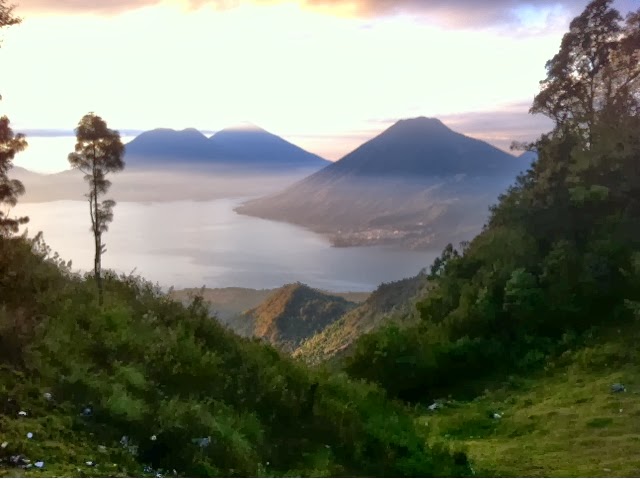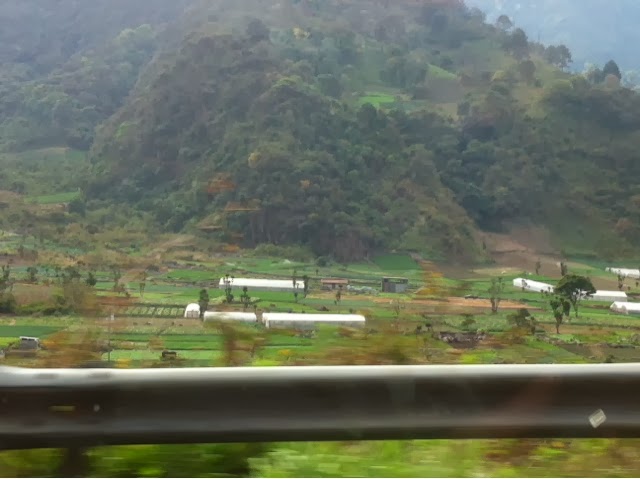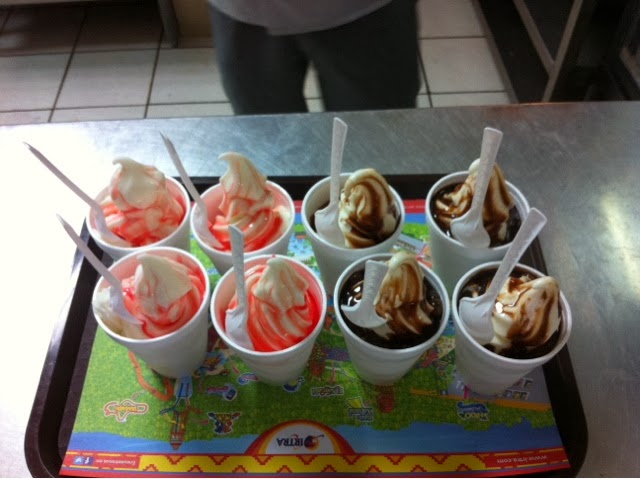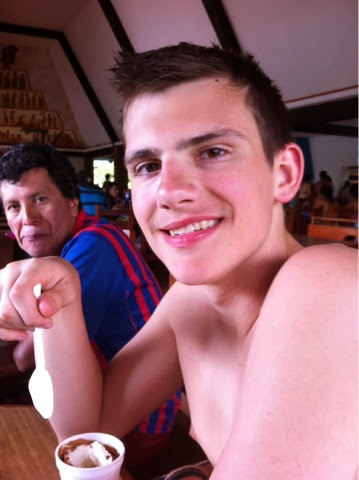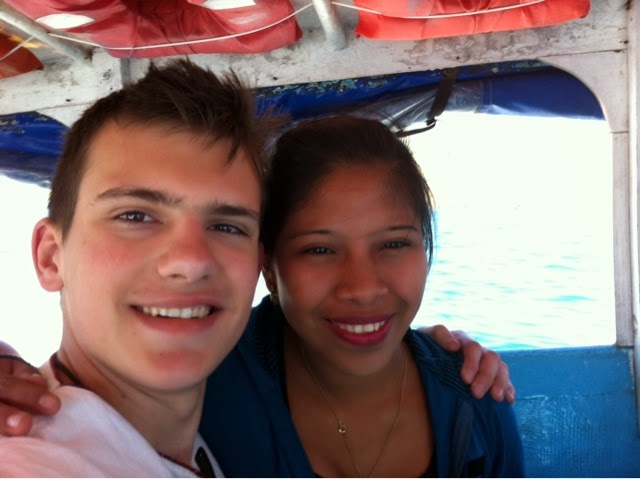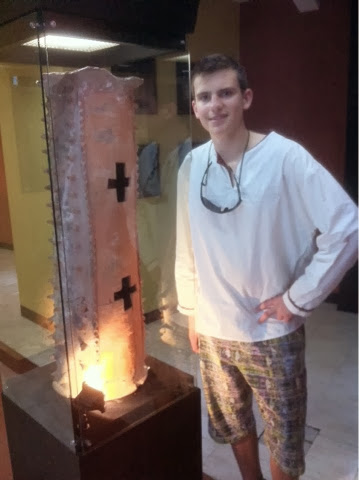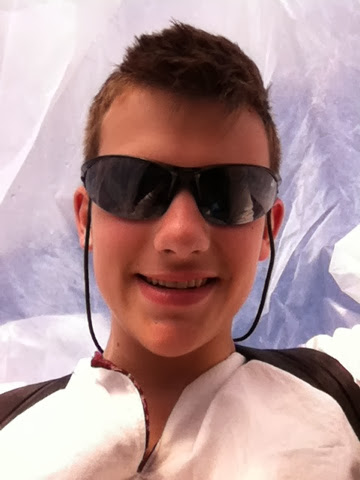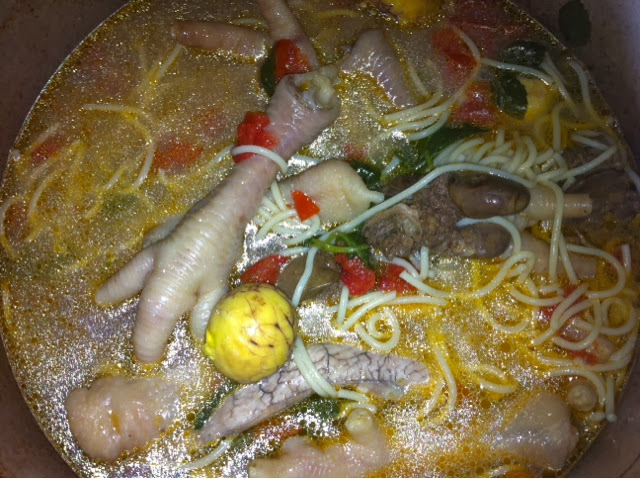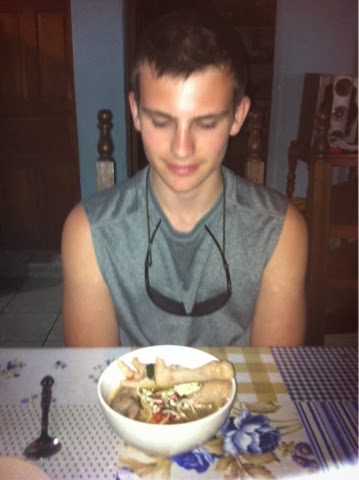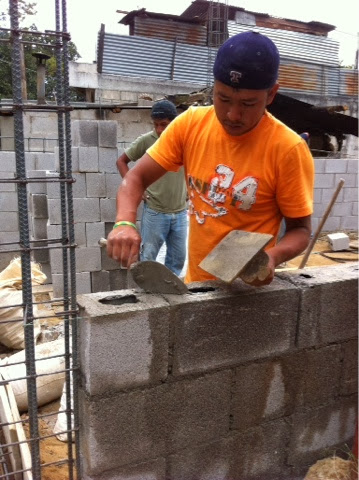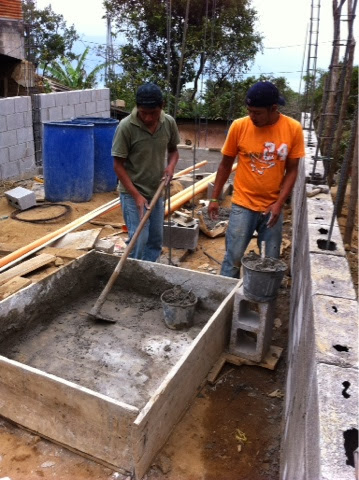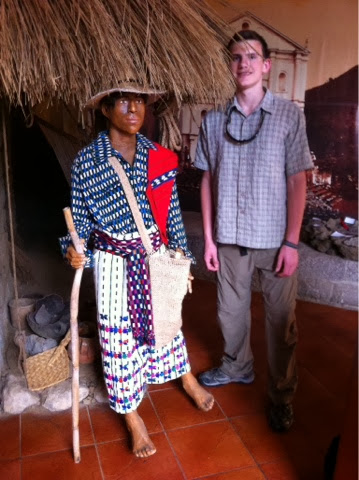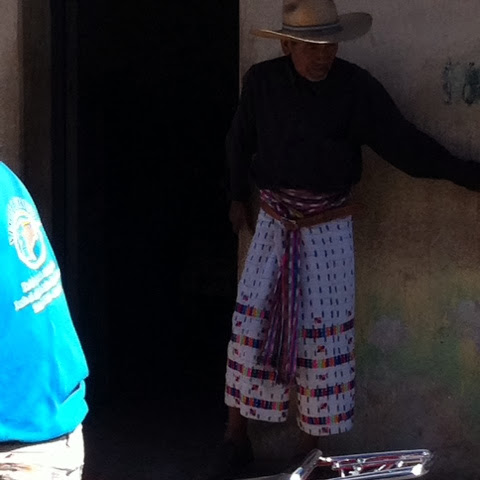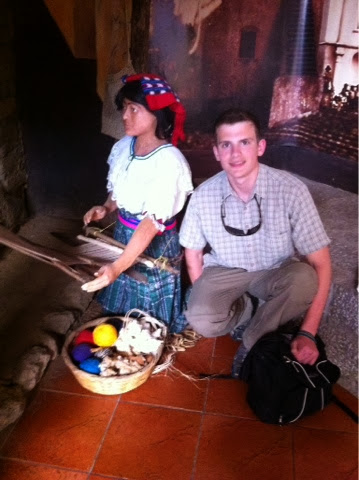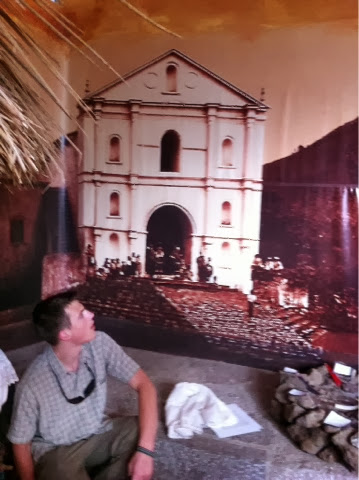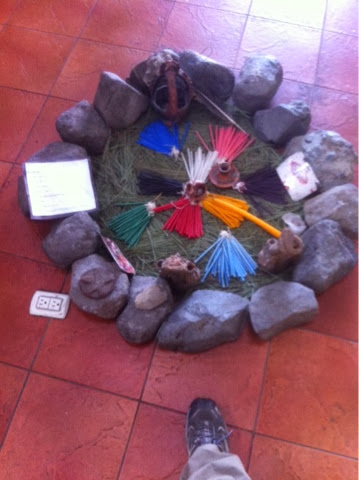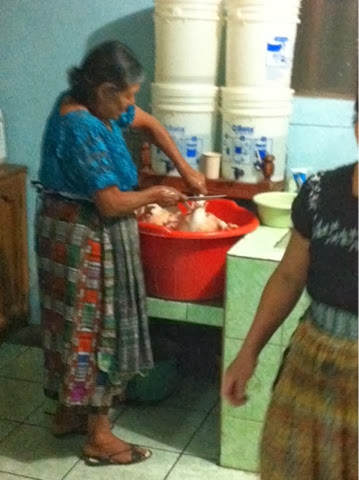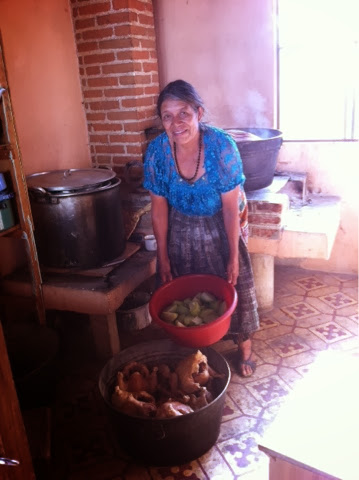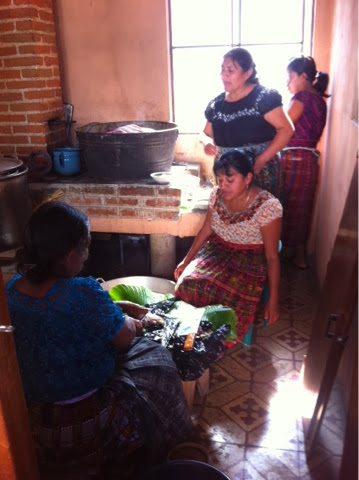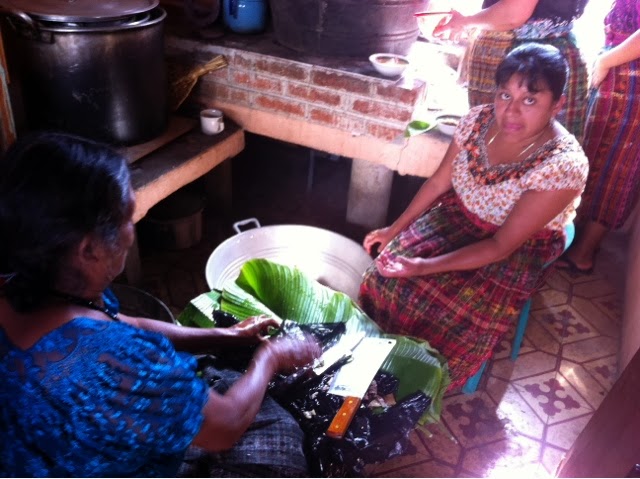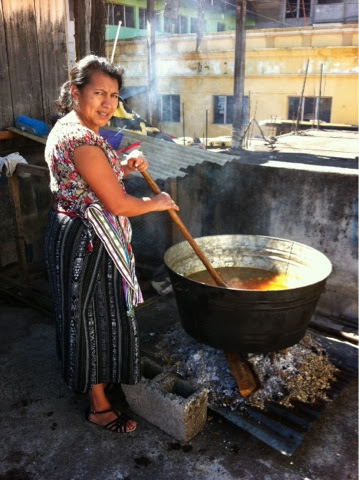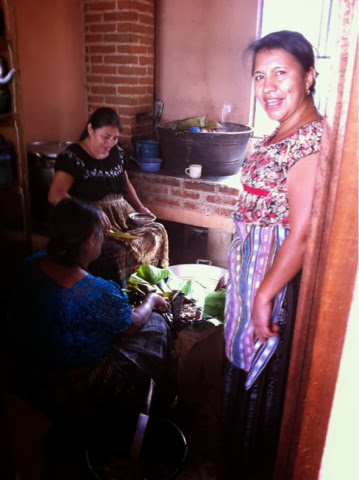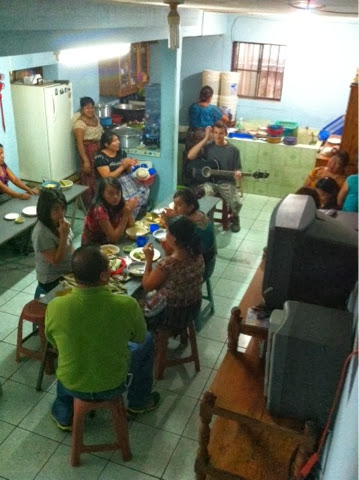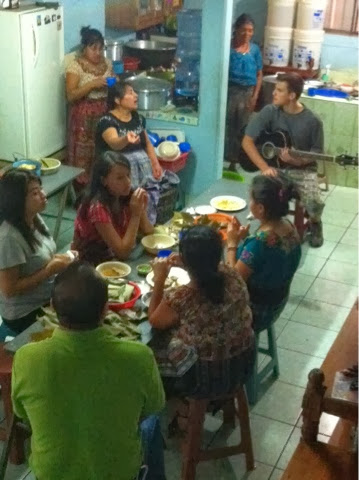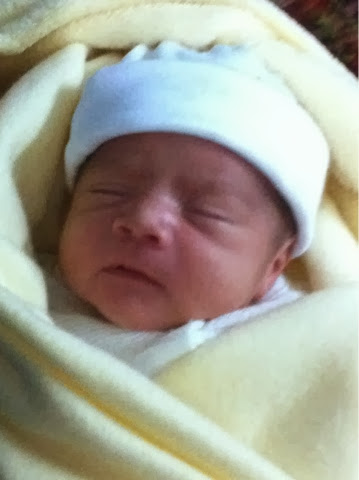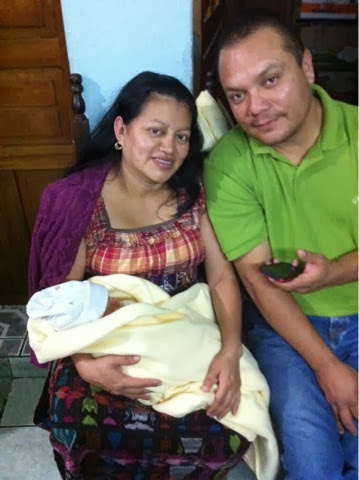Tomorrow is a big party at the house because Maria's sister had a baby last week and it is tradition to have a big party 1 week after the baby has been with the mamma only. All night, everyone (all the aunts, uncles, grandparents and kids) were here, cutting vegetables, making tamalitas (masa wrapped in hoyas de maxan - leaves are really big).
8 chickens arrived in a big bucket last night, plucked but whole.Here are some photos of Abuela cleaning the chickens and cutting some up, as well as other things they were doing last night.
The women got up at 3AM this morning (Saturday) to get the fires going and start cooking at 4AM. By the time I got up to the roof to check things out at 8:30, the chickens were cooked, and the tamalitos were steaming. (Tamalitos arent tamales, they are JUST massa wrapped in maxan leaves - nothing inside them).
As I came out to take photos, outside on the roof, they were stirring the "caldo de pollo" chicken broth with cabbage which had also been cooking since about 4AM. They added (in the blue strainer in the photo) achiote (annatto in English) to add a reddish color and at the very end, they add "jierva buena" for flavor... you can see Grandma showing you the bowl full .The hierva buena looked like mint, and when I smelled it, it WAS mint.
Everyone came, some in and out, but the family was always there. We ate everything - the chicken broth was the base and then we added the chicken, chayote (green squash), rice, and had it all with tamalitos and horchata (a sweet rice drink... yummm...)
I also got to play bass, I sang and did a short Muay Thai exhibition for everyone.
The baby's name is Rudy Jr.. Fermina (the mom, is Maria's sister. She is married to Rudy Sr.)
Fermina, Rudy and Rudy Jr. (Mom thinks Rudy looks a little like Jimmy Smitts)
GUATEMALA's CIVIL WAR & HISTORY FROM MAYAN PERSPECTIVE
1 night at the Cooperativa, we watched a movie called "When the Mountains Tremble." At first i thought it was about the volcanoes then they said it was about the civil war. We bought the movie and my dad has it in Bellingham if anyone wants to borrow it. Its really interesting.
2 nights later at the Cooperativa, we had a teacher come in and give a lecture on the history of the indigenous people, including the civil war. It made the movie make even more sense, but its really a harsh history from the perspective of the Maya people.
This is my summary:
In 1492, the Spanish arrived in the Americas... By 1524 the colonial era began and continued for 297 years, until indepence from Spain in 182. During this time, the Maya people experienced 1) agricultural exploitation - Maya were kicked off their land and forced to work on it. 2) a supressed economy - they were paid very little for the work they had to do and 3) a supressed ideology - the Maya were looked at as less than a full human and didnt receive basic human rights.
During the colonial era, there were 23 families who were in charge. They had the most money and power and basically made the Maya people slaves to their own land turning them into indentured servants. Many Maya people ran into the highlands to get away, and were safe there because the criollos wanted the lowlands, because the ground was more fertile. The Maya had the harder land to live on, but at least they were mostly left alone by the criollo government.
The other slowly started to show their unhappiness at the situation and it got so strong, that the criollos (the Spanish descendents) said, we had better declare independence from Spain so the Maya think that they are freed of Spain. In 1821 they declared indepence in "words only"... they were really just annexed by Mexico. It wasnt until 1847 that Guatemala separated from Mexico.
Regardless, Guatemala was still ruled by the criollos' families from Spain, so it really didnt change anything. Finally, the criollos divided into 2 groups: the conservatives (the Catholic Church) and the Liberals (who wanted to modernize the country).
Finally, in the 1900s, the liberals were in charge for a while. They were the reformers, but reformers for the criollos. Justo Rufino Barrios is on the $5Q and Miguel Garcia Granados is on the $10Q. These good things didnt last long though.
In 1907, Guatemala sold big chunks of land to the UFCO (The United Fruit Company).... the chunks of land they sold "included" the Maya workers on it.
THEN, they made more concessions for the U.S.A by letting them build a railway through Guatemala and they also sold them electricity rights.
In 1931 - 1944 was a really bad time because of President General Jorge Ubico Costaneda made 3 laws that really impacted the Maya people.
1) Law of Vialidad (taxation on any land Maya were living on, every 4 months and if they couldnt pay, they could work on the farms to pay it.)
2) Law of Vagrancy (That everyone 18-60 years old had to work... if they couldnt find work, they could work on the cotton and coffee plantations for very little money that insured they would be very poor. Basically, it made into law what was already happening in the colonial era when Maya were working their own land for someone else, and getting paid unlivable wages...)
3) Law of the Right to Work (Everyone 18-60 years old had to cultivate. If you didnt have land to cultivated, you could work for the government on appointed farms for very little money.)
These laws only helped the criollos - those 23 families - not the Maya people who were still mostly illiterate, or many of the poor ladino people. Also, at this time, the country was under military control.
The Maya started to organize again to protest. October 20, 1944 there was so much public problems that the General fled the county. There was a revolution and finally a democracy was trying to evolve.
The country had its first voting and the first really elected president was a professor - President Juan Jose Arevalo Bermejo. The 2nd president was General Jacobo Aibenz Guzman who served during the revolution and helped some things to change for good - some reforms in education and healthcare.
The criollos thought more education, healthcare and reforms meant COMMUNISM, so, the criollos called the CIA and they did a Coup' de taut. President Guzam left office.
1954-1960 was back under military control.
So, people started to organize again, but came under harsh repression from the army. They selectively killed community leaders, who were organizing people, for 5-7 years. To bring world wide attention to the problem, a group of 7 activists snuck into the Spanish embassy and took over the building. Attention was drawn and the army just locked them in and burned them alive in the building.
In 1960, Guatemala allowed the USA to use their land to train Guatemalan soldiers to invade Cuba. BUT... 160 soldiers came together and said, "No, we are independent." This was the beginning of the guerilla movement (the communists). From this time on, the government was looking for guerillas or subversives for 36 years... all the way through until a peace accord was signed in 1996.
When the government started hunting down the guerillas, they fled into the highlands where the many Maya had fled almost 100 years earlier. They Maya in the highlands were mostly illiterate and didnt understand politics... they were just trying to survive.
The army followed them into the mountains and killed everyone they saw, including woman and children.
1980-84 was the VERY WORST for Mayan people and poor ladinos.
* There were more than 300 massacres
* 200,000 dead and disappearnces
* 90,000 refugees
President Victores said in an interview that the guerillas were the fish, and the Maya were the water... so if there was no water, there could be no fish. People who were thought to be guerillas or subversives were tortured. Once a group of 20 people were brought out into the town for everyone to see. Their ears were missing, their fingers were missing, some had missing eyes, and were badly cut up and beaten. In the end, they were be-headed in front of everyone. Then they told everyone that this would happen to them if they helped the guerillas in any way.
The next president (Montt) forced every male 18-60 to be on auto-defence patrol and shoot at guerillas. If they didnt they would be considered subversives and killed. There were more massacres, check points so people couldnt travel from region to region. During the early 1980s - one of the worst massacres occured in a puebloan highland. All of the men were gathered up separately from the womean and children. The women and children had to watch all the men be shot. Then they took the women and raped them in front of the children, and the pregnant women had their babies cut from their stomachs and smashed against walls.
Also, during this time the government controlled the rivers, and put poison into those that led through villages. No meetings were allowed, and businesses worked with the army to tell them if anyone was causing problems, meeting or trying to organize groups. They would be considered communists, disappear, and then show up the next morning dead, usually with their throats slit. The army completely destroyed the social fabric. Anyone who had any stability was reported on by villagers and was killed.
Finally, in 1992, Rigoberta Menchu (her book is called I, Rigoberta Menchu) won the Nobel Peace Prize which was a huge bruise on the Guatemalan Government.
In 1996, the violence stopped when the guerillas signed a peace accord with reforms of education and healthcare... but very little has actually changed since then.
